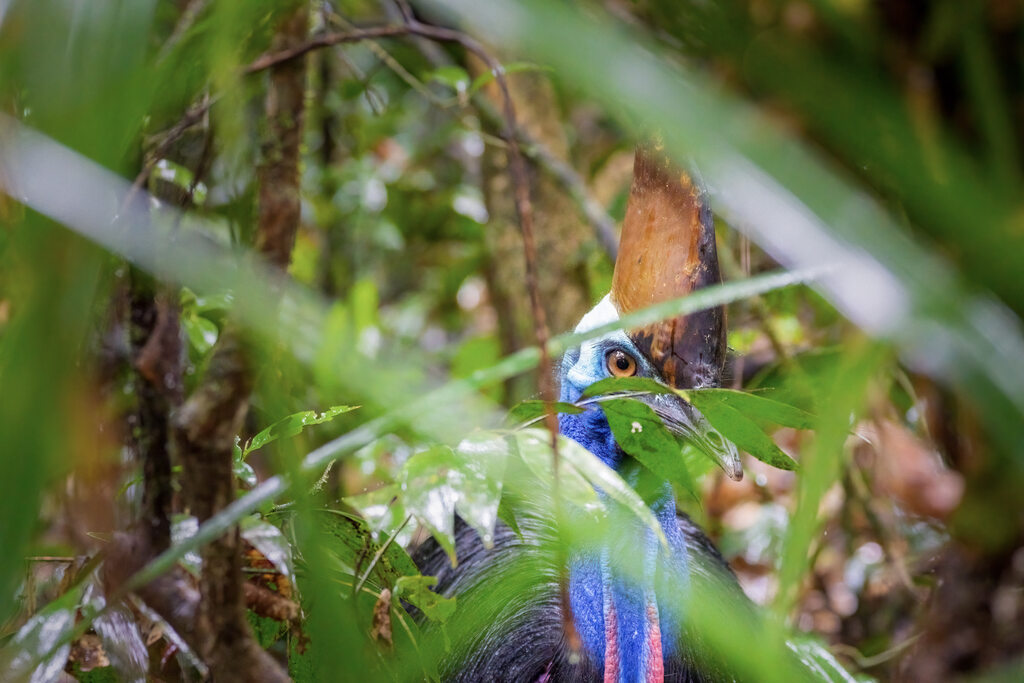
Deadline looming for Douglas Shire residents to comment on Cassowary Recovery Plan
GET INVOLVED

A comment piece from Rainforest Rescue
Could one bird really have such an impact on everyone in tropical Far North Queensland including those across the Douglas Shire?
When you are almost six foot tall and (perhaps unfairly) nicknamed the ‘murder bird’, then yes. It also helps if you are the focus of a federal government national recovery plan to ensure a healthy population of your species.
You are, of course, the Southern Cassowary, one of Australia’s most iconic wild species. You are also one of our region’s rarest.
The clock is ticking for Douglas Shire residents regarding the Australian Government’s Draft National Recovery Plan of the Southern Cassowary, with feedback closing on September 6.
Rainforest Rescue believes the recovery plan will only succeed through conscious community commitment. Relying on government agencies alone is not enough for the level of energy, resourcing and on-the-ground activity laid out in the plan.
It’s evident from the recovery plan the Australian Government concedes this is the case too. But how might this plan benefit all of us as residents of the Douglas Shire and put cassowary numbers on the road to recovery?
Because simply put, no plan is an island.
The primary habitat of Southern cassowary is tropical rainforest, ideally covering a large area so that the species can behave, reproduce and thrive as it has done for millions of years. Our region is blessed with swathes of the oldest rainforest in the world, referred to in the recovery plan as being ‘hyper-diverse’, meaning an incredible array of species in one environment. But the rainforest can become a fragile and fragmented habitat if not managed carefully.
To achieve the vision of the plan that “a healthy population of the southern cassowary… occupies its full potential range in connected landscapes of functional ecosystems… (where) each population coexists with informed communities” requires cooperation from landowners, local communities, conservation organisations, tourists, and government representatives, working towards a common goal.
Several of the biggest threats to cassowaries also impact on how we live within the Wet Tropics environment.
“While maintaining a healthy habitat for Cassowaries is vital, so too is reducing the incidents of vehicle strikes and attacks by domestic dogs," Rainforest Rescue’s Ecological Advisor and representative on the Cassowary Recovery Team Allen Sheather said.
Incidents involving cassowaries and domestic dogs suggest that minimising nuisance behaviour from pets would benefit our neighbours and the birds themselves. Cassowary casualties from road traffic that intersects cassowary habitat places a focus on regional roads, with the potential to prioritise funds for local road upgrades and safety enhancement strategies.
Further, cassowaries are also at high risk from interactions with feral pigs–a contentious animal which causes excessive damage to agricultural crops, livestock pasture and other native species.
--
To comment on the draft plan, please send your comments to [email protected] before September 6.
Thank you!
Newsport thanks its advertising partners for their support in the delivery of daily community news to the Douglas Shire. Public interest journalism is a fundamental part of every community.
Got a news tip? Let us know! Send your news tips or submit a letter to the editor here.
* Comments are the opinions of readers and do not represent the views of Newsport, its staff or affiliates. Reader comments on Newsport are moderated before publication to promote valuable, civil, and healthy community debate. Visit our comment guidelines if your comment has not been approved for publication.